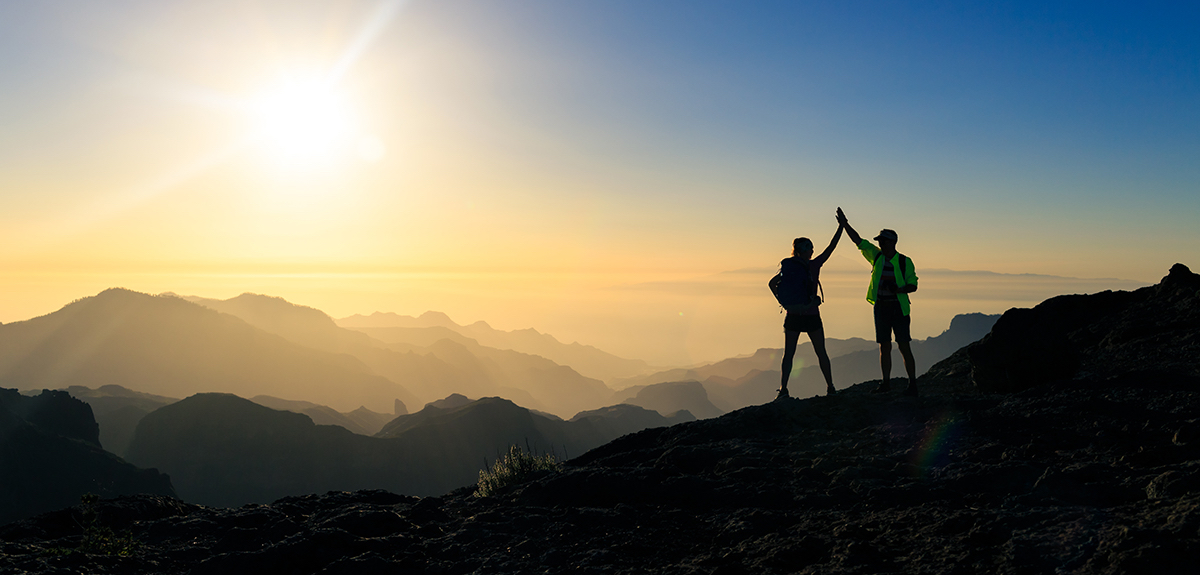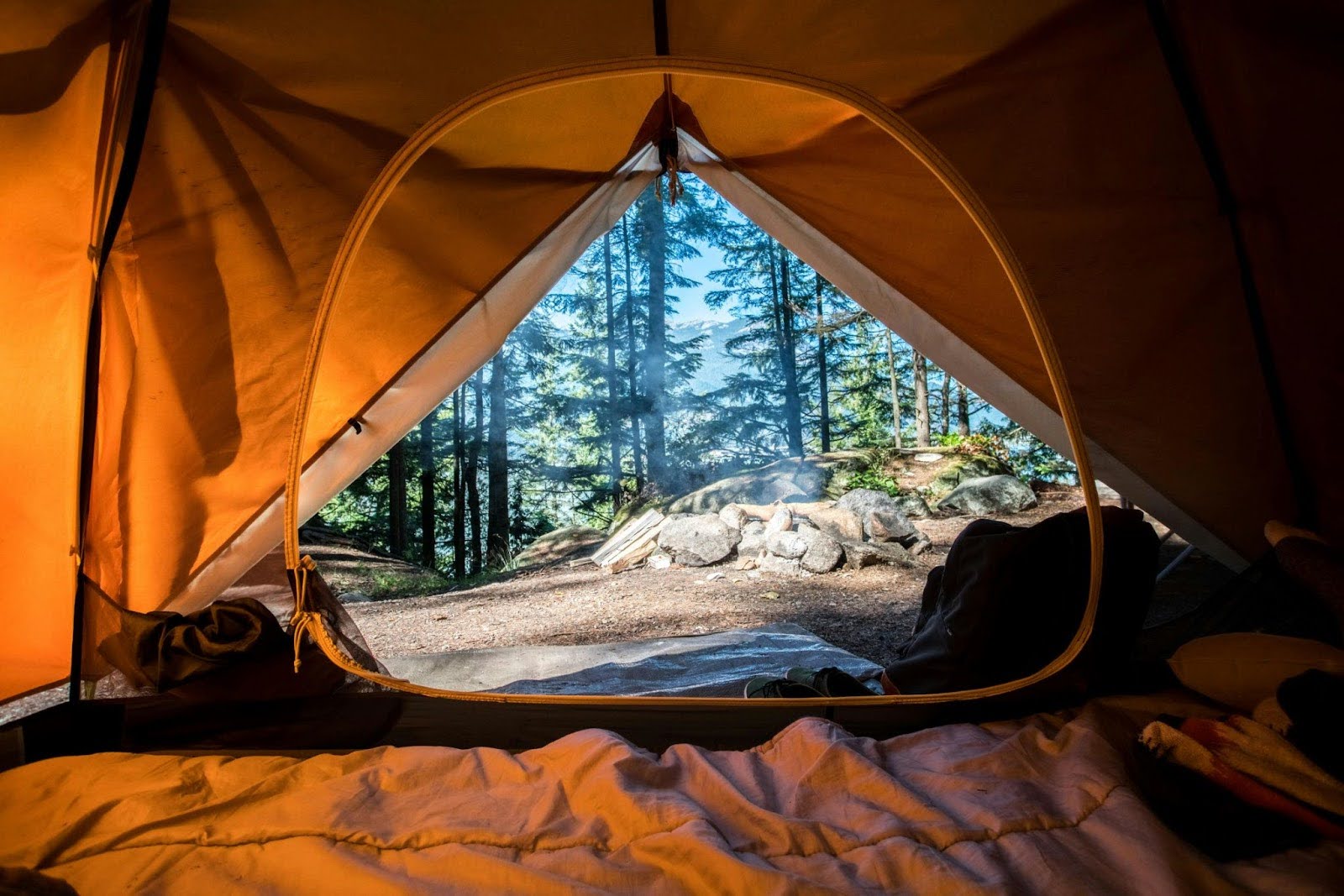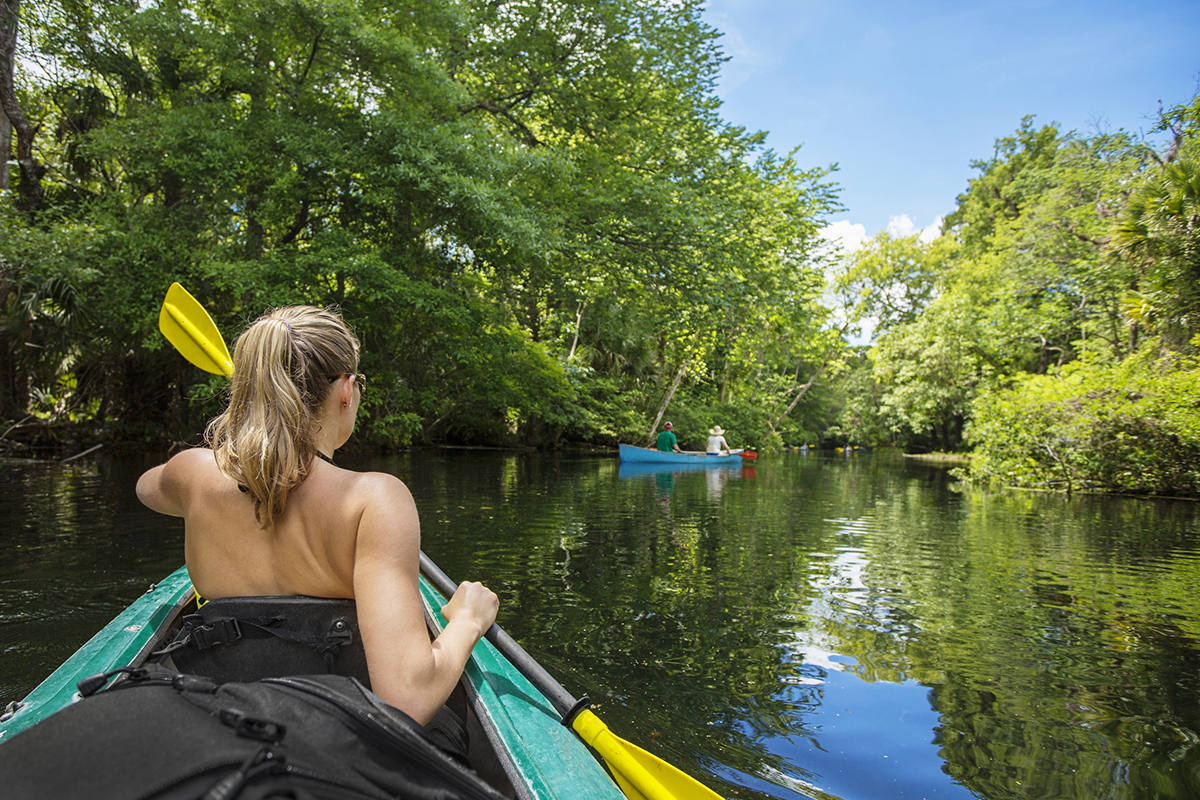RVing in Yosemite National Park
Image Caption:
Yosemite, located in Central California, is always mentioned as one of America’s great national parks. We had passed through Yosemite before, and had done some of the usual touristy things – a walk to view Yosemite Falls, a stop at the excellent visitor center, dinner at The Majestic Yosemite Hotel – but this time we decided to really experience the park. We began by reading John Muir’s book, The Yosemite, and then we headed out to the park for a weeklong stay.
Hodgdon Meadow Campground
It was late October as we drove in to Yosemite from the west via California Route 120. We passed through the park’s Big Oak Flat Entrance and pulled into Hodgdon Meadow Campground, which is located about 45 minutes northwest of Yosemite Valley. Although this campground is not particularly RV-friendly – with only 34 of its 104 sites suitable for RVs – a very helpful campground host greeted us and picked out a suitable site for our 30-foot Winnebago. Between the trees and the unlevel sites, our host did a great job of helping us get situated. We did see some larger motorhomes, but wouldn’t recommend this campground for motorhomes longer than 36 feet. Once set up, we pulled out the park information provided to us at the park’s entrance station and began making our plans.
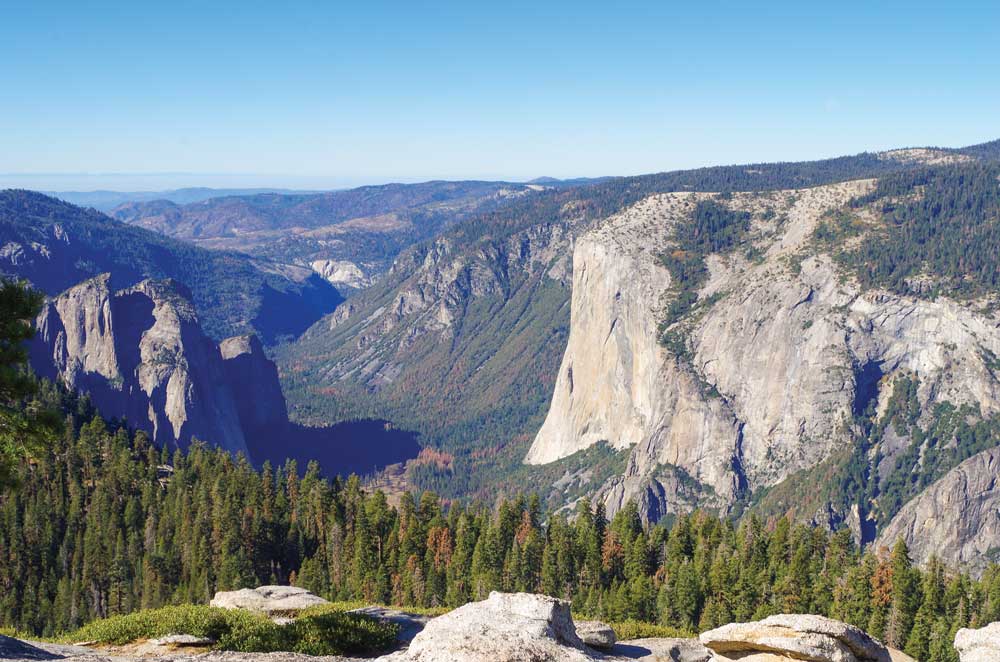
Hiking to Sentinel Dome results in panoramic 360-degree views of some of Yosemite’s best, including El Capitan.
Tioga Road
Because the Hodgdon Meadow Campground is near the Tioga Road turnoff, we decided that our first day in the park would be spent driving along Tioga Road. We headed toward Tenaya Lake – between Yosemite Valley and Tuolumne Meadows – and had no problem driving our motorhome up to that point along the road. We found most of the viewpoints along the way to be RV-friendly. Looking down at Yosemite Valley, more than 3,000 feet below, we experienced the first of many “wows” to come. At Tenaya Lake we hiked the loop trail around this beautiful alpine lake. Then we drove back to the Olmsted Point viewpoint where we walked to the edge of the canyon and looked down again into the valley. We could see Half Dome, Clouds Rest and so much more. We decided to explore the valley the next day and headed back to our campsite at Hodgdon Meadow.
Big Oak Flat Road
The next morning, under a robin-egg-blue sky, we drove southeast along Route 120/Big Oak Flat Road. We passed the Merced Grove of Giant Sequoias, which is only about 4 miles from the campground, but we didn’t stop – we were just too excited to get to the valley. Our first destination was Yosemite Falls – the highest waterfall in the park, dropping a total of 2,425 feet over three separate falls. It is awe-inspiring. Little did we know at the time that this was just the beginning of a series of unbelievable sights we would experience in Yosemite.
Yosemite Campgrounds
There are 10 campgrounds in the park that can accommodate RVs. None of the 10 facilities have hookups. Dump stations and potable water can be found at the entrance to Upper Pines Campground; as well as near Wawona Campground (summer only); and near Tuolumne Meadows Campground (summer only). If you are entering the park via Route 120 and require a full-hookup site, there are a number of private RV parks from which to choose, including Yosemite Pines RV Resort and Family Lodging (209-962-7690, https://yosemitepinesrv.com).
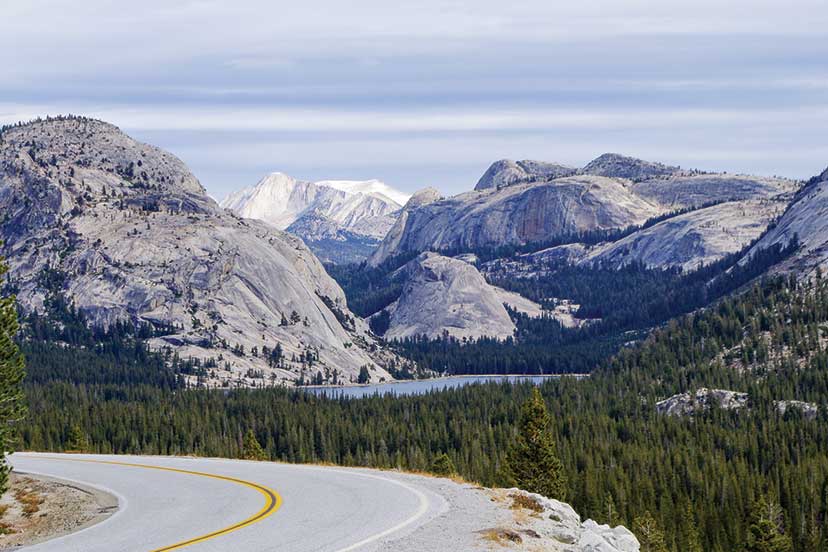
Tioga Road (closed from approximately November through May) is another location with “wows” around nearly every corner.
Upper Pines Campground
We chose Upper Pines Campground as our home base for the next six days. Even though the sites are close together, the views of the surrounding valley more than made up for the tight quarters. Sites were level, and thanks to the park information, marked for different length RVs on the website. We had plenty of room in our chosen 35-foot spot. There were also a number of larger sites available for 40-foot and longer motorhomes. Make note that reservations are strongly recommended, particularly in the peak time of summer. Unlike most reservations for national park campgrounds on www.recreation.gov, there is not the usual six-month window for booking. Yosemite’s reservable campsites are available up to five months in advance on the 15th of each month. These sites are in extremely high demand and are usually all booked within 20 minutes after they become available.
Visitors to Glacier Point may feel like they’re on top of the world, with breathtaking sights in every direction.
Half Dome Village
As noted, there are no hookups in the park, but all the campgrounds have restrooms with flush toilets. Showers are available at Half Dome Village, a short quarter-mile walk away. Half Dome Village also has a very well stocked General Store, a lounge (former activity room) with Wi-Fi (for a $5 fee), and a pizza restaurant and snack bar. Cell service is very spotty in the valley; we found the best place for service to be in the vicinity of the park’s visitor center.
Over the next five days, we rode along the valley’s bike trails, stopped at the visitor center, marveled at the art at the Ansel Adams Gallery, went to an evening program and video with Ron Kauk (a rock climber extraordinaire), and considered taking a four-hour class on digital photography. But all of this was nothing in comparison to our three all-day hikes.
Yosemite Hikes
Nevada Fall and Vernal Fall
It’s hard to choose a favorite, but our hike to Nevada Fall and Vernal Fall, using the John Muir and Mist Trails, was the best. Walking the half-mile from Upper Pines Campground, we arrived at the trailhead at Happy Isles. Well-marked trail signs pointed us to the John Muir trail. We hiked 2.7 miles on the well-maintained trail to Nevada Fall. We watched in awe as the water cascaded 594 feet down the granite wall. We then continued to Vernal Fall, watching our footsteps with the trail rocks. It was tough to keep our eyes on the trail when the vistas were so incredible. Arriving at Vernal Fall, we were again awed as torrents of water crashed over the upper rocks. We found a spot to sit and take in the view as we ate our packed lunch.
As we left Vernal Fall the plunging water had formed a beautiful rainbow in the mist. The 900 steps back down were a little tough, but going down was definitely easier than coming up. Finishing the hike after 9 miles and a 1,900-foot climb in elevation, we headed back to our campsite. (If this distance is too great, you can break this hike up into two separate hikes of 5.4 miles round trip to Vernal Fall, and 2.4 miles round trip to Nevada Fall.) We then took some much-needed relaxation time on our return, sitting under the pine trees. As the sun set over the canyon’s walls, we lit a campfire, watching the stars appear and reflected on this wonderful day.
Mirror Lake
To rest our bodies the next day, we elected the loop trail around Mirror Lake. This time we boarded the shuttle for the mile ride to the trailhead. This trail is mostly level, with great views looking up the valley as well as seeing the reflection in the lake. Once again we took our lunch and enjoyed sitting at the edge of the Tenaya River as it flowed by on its way to Mirror Lake. Completing the 5-mile hike, we felt good, and decided to take the park shuttle to the Yosemite Valley Lodge for dinner. Convenient shuttle service allowed us to keep our motorhome set up in camp, and to avoid the parking congestion at the trailheads.
Sentinel Dome
For our third day of hiking, we headed to Sentinel Dome, 3,000 feet above the valley floor. We broke camp early and drove our motorhome up Glacier Point Road. In season, there is a park shuttle, but since we were off-season (much less crowds), it was either hitchhike or drive. Arriving at the trailhead before 10 a.m., we had no problem parking. There is a 30-foot vehicle length restriction past the Sentinel Dome trailhead to Glacier Point.
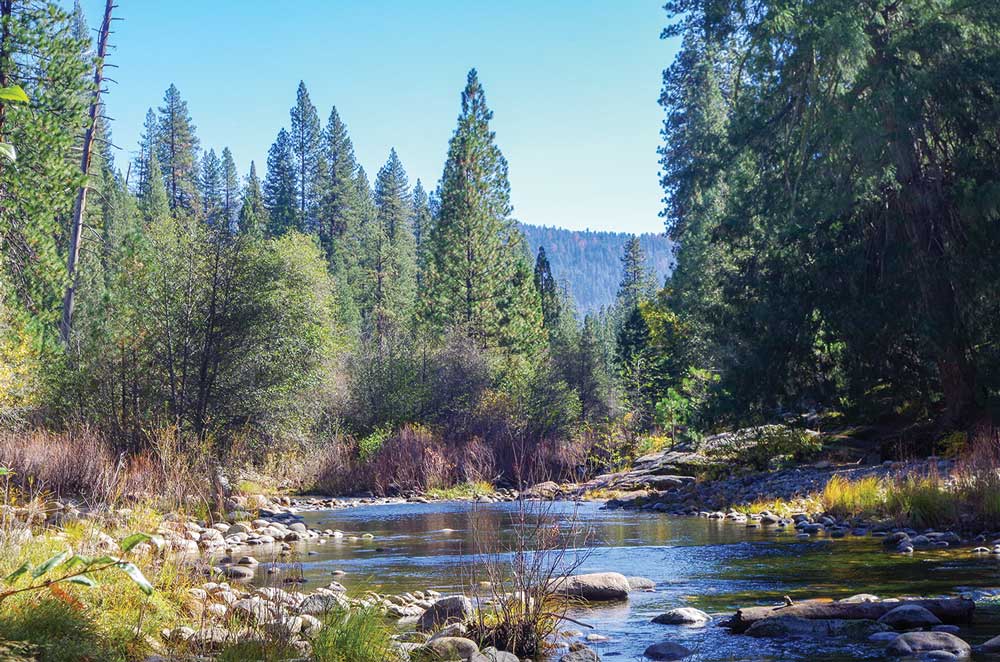
Yosemite is a great place for a picnic, and views like this serene setting are common.
Once again, we loaded our backpacks and headed on a loop trail. Our first stop: Sentinel Dome, and its commanding views. The entire trail was 6 miles in length, but you could simply walk straight to the dome in less than 2 miles. What a feeling once we reached the top! The views of the valley, Half Dome and the surrounding landscapes were breathtaking! And yes, another perfect lunch stop; but we decided to continue on the trail, stopping right on the ridge where we could look down on the spectacular Yosemite Falls, which proved to be an even better stop.
With the hike completed, we continued on the road to Glacier Point. Being 30 feet long, our motorhome just met the restriction, and we were pleasantly surprised to find many parking sites suitable for our coach. Up on Glacier Point, we felt like we were on the top of the world.
By the end of our week in Yosemite the park had become one of our favorite places. If a trip to Yosemite is in your future, plan to spend at least a week in the area, and we encourage you to hike some of the trails to experience firsthand what John Muir first encountered almost 150 years ago in this iconic, very special location.
Shuttle Service: There are three options for entering the OBX. Free shuttle services are available throughout the park. Two shuttles serve the Yosemite Valley, one of the park’s most popular destinations: Yosemite Valley shuttle, which operates year-round and provides service around eastern Yosemite Valley; and El Capitan shuttle, which operates from mid-June to early October and stops at El Capitan, Four Mile trailhead and the Valley Visitor Center.

